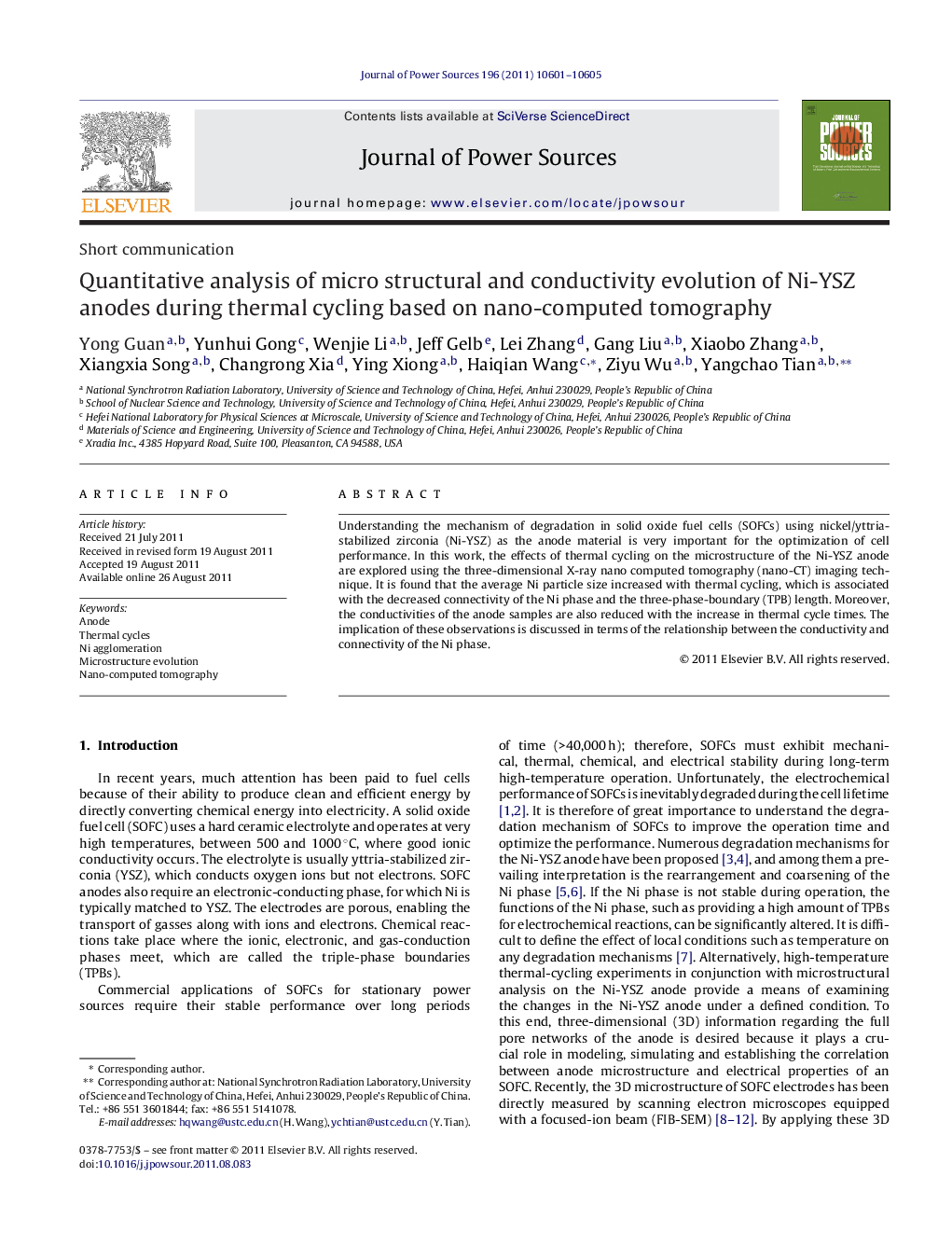| Article ID | Journal | Published Year | Pages | File Type |
|---|---|---|---|---|
| 1293252 | Journal of Power Sources | 2011 | 5 Pages |
Understanding the mechanism of degradation in solid oxide fuel cells (SOFCs) using nickel/yttria-stabilized zirconia (Ni-YSZ) as the anode material is very important for the optimization of cell performance. In this work, the effects of thermal cycling on the microstructure of the Ni-YSZ anode are explored using the three-dimensional X-ray nano computed tomography (nano-CT) imaging technique. It is found that the average Ni particle size increased with thermal cycling, which is associated with the decreased connectivity of the Ni phase and the three-phase-boundary (TPB) length. Moreover, the conductivities of the anode samples are also reduced with the increase in thermal cycle times. The implication of these observations is discussed in terms of the relationship between the conductivity and connectivity of the Ni phase.
► In this study we image the anode samples with thermal cycle using Nanotomography. ► We observe the Ni aggregation during thermal cycle. ► The microstructural degradation of anodes happens with thermal cycle. ► The link between anode microstructure and its performance is investigated.
